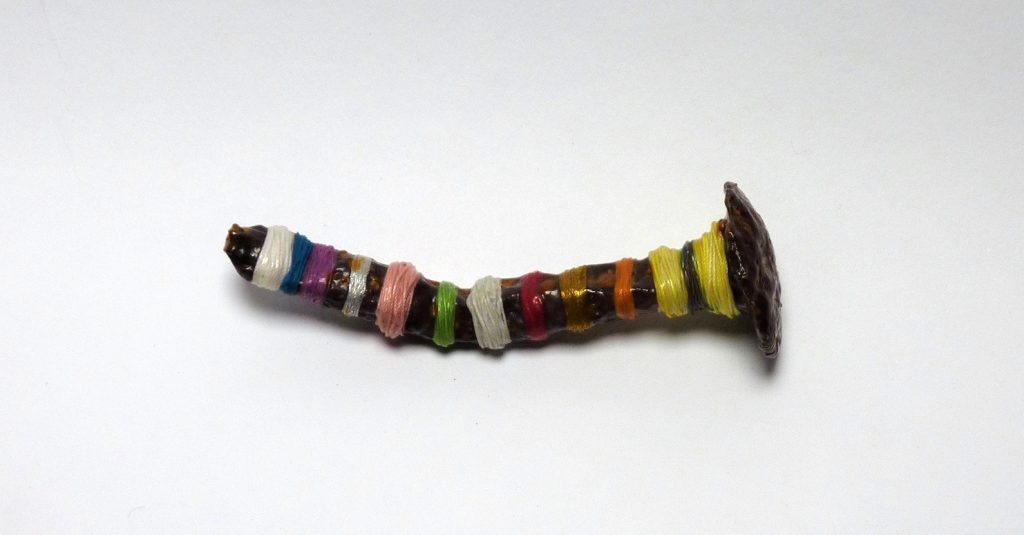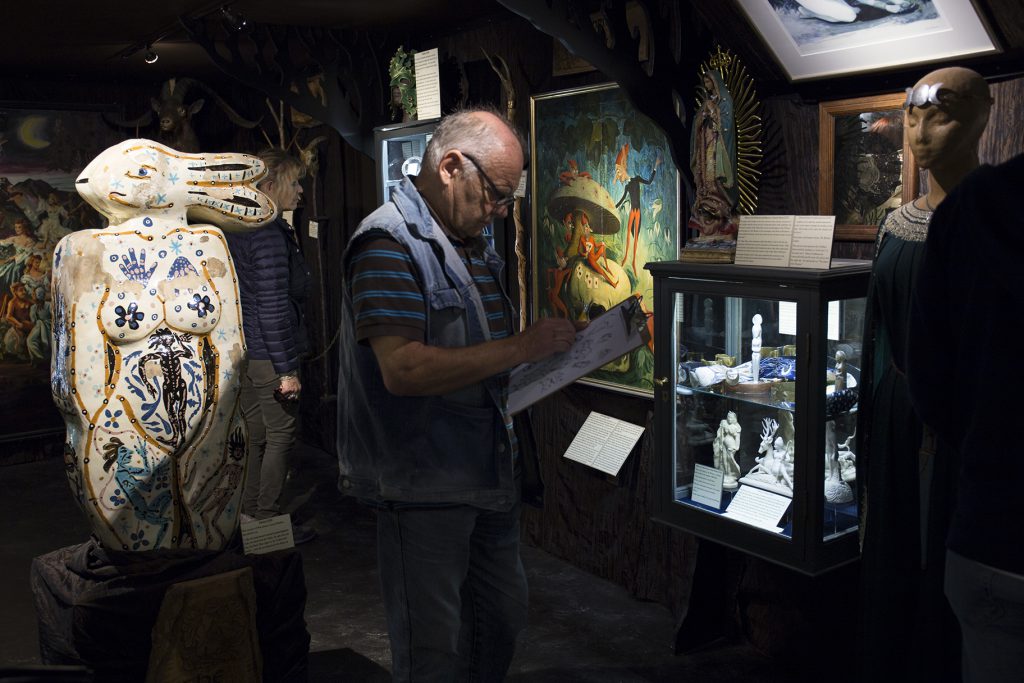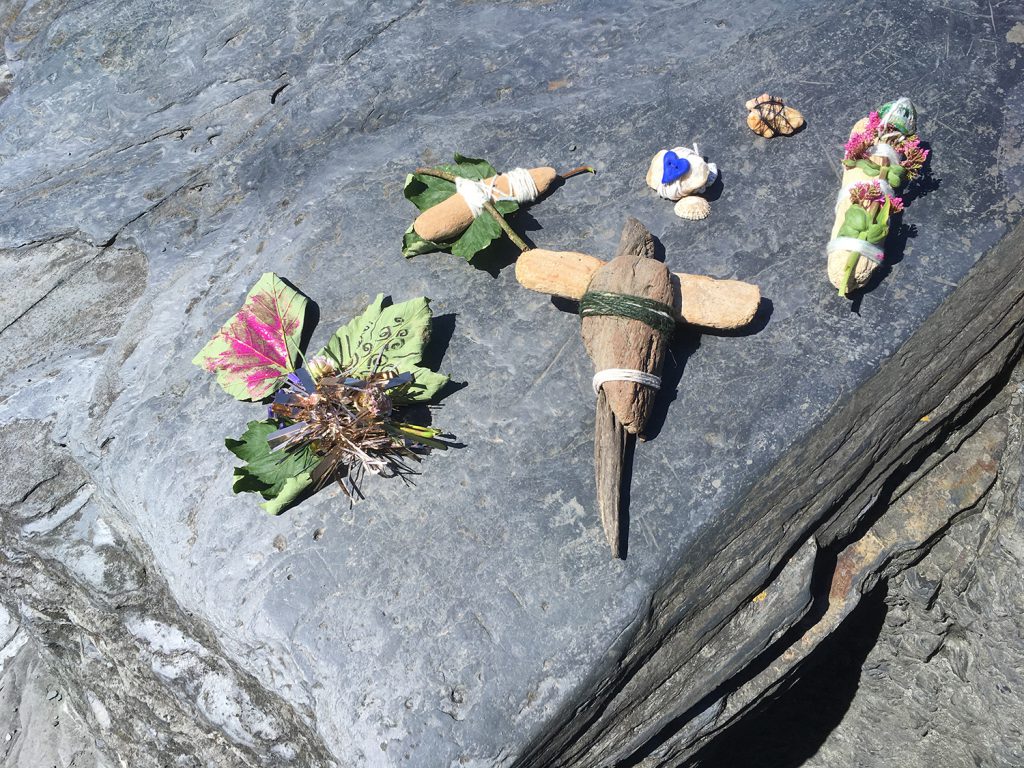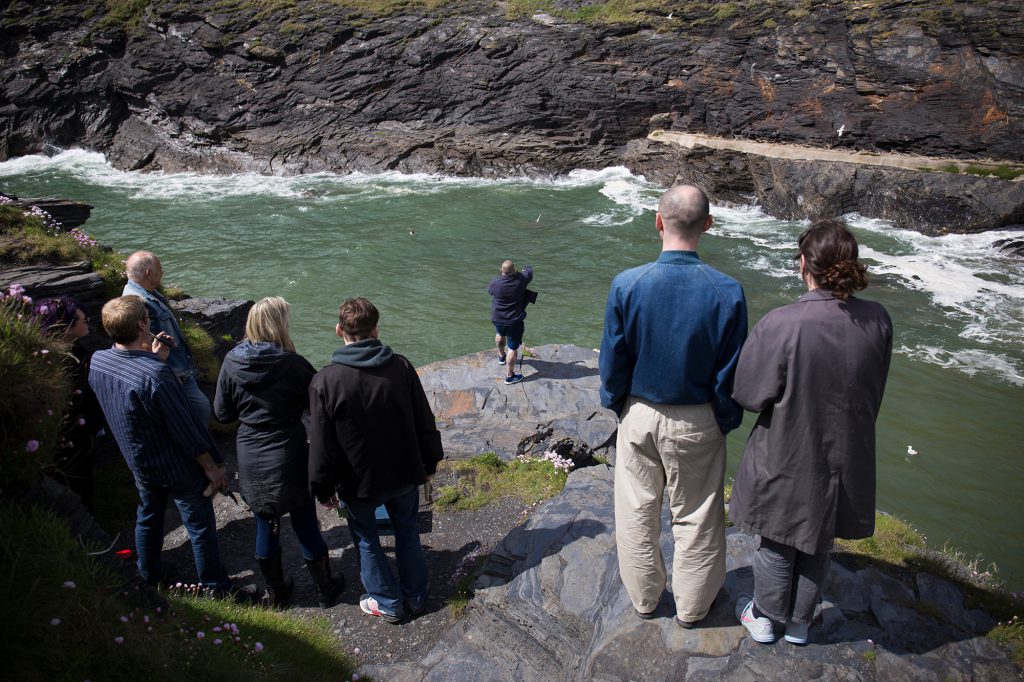Banishment: the ritual action of getting rid of something unwanted
17 May
Today it is 26 years since uncle Robert committed suicide off Beachy Head. The weather is cloudy but hopeful, contrary to reports. Theresa May is still talking about being ‘strong and stable’. The moon is in her last quarter.
I park my Nissan Micra with a ‘goddess worshipper’ sticker on the bumper near a National Trust sign on the road between Boscastle and Tintagel. Andrew Kerton is with me, we met at art school in Amsterdam (we bonded over having been Hole fans as teenagers – goddess worshippers of a sort). He’s going to run a body-work session as part of the workshop tomorrow. I’m happy to be spending time with him, it feels comforting. We’re off to look for the labyrinth carvings in Rocky Valley. Cecil Williamson, the founder of The Museum of Witchcraft and Magic, sited the museum in Boscastle for its proximity to this sacred place. It is so different to the granite landscape of Penwith here. The pile-ups of slate give a sci-fi-ish feeling of horizontality. After walking down to an inlet we admire the thrift and some little belled flowers with snakeskin petals that live in the cracks and gullies near the flowing water. We collect some of these, some bluebells and lots of twigs and stones for the charms we’re going to make tomorrow.
I’ve read that the labyrinths are near a ruined mill, so we turn inland. The grasses become yellow under a canopy of trees and I start to trance out on the bluebells flickering through them. (This May I have taught myself to ‘lift the veil’ in a bluebell trance.) They are so bouncy! I put one behind my ear like a microphone and pretend to talk to the goddess on it. Babbling, I’m a few steps behind Andrew when he turns to me and motions that the air has changed. He has passed through a threshold. When I get there I feel it too, the energy is palpable. We cross over the bridge slowly and arrive at the dripping ruined mill and it feels as though we’re wading through treacle. The air is throbbing and again in Cornwall I’m reminded of the MRI scan I once had, when my body was violently shaken by electro-magnetic pulses. It is pleasurable but quite eery. We creep behind the buildings and come upon the petroglyphs, which are positioned low on the rock face behind the ruin. They are immaculate. Andrew sees in them a body surrounded by connective energy. I see female reproductive organs. Suddenly for me everything is sexualised; the trees heave with May’s chaotic and unstable rebirth. I laugh.









